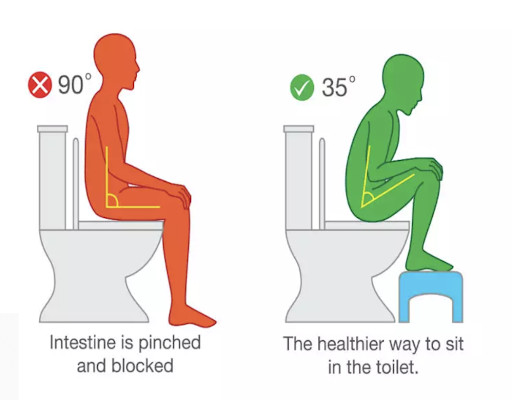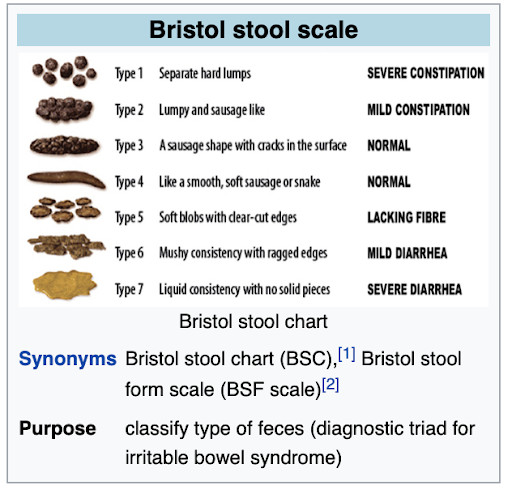How To Poop Like A Unicorn

By Heidi Marten
Bowel issues are a common problem in society and physical therapists often help treat patients with bowel dysfunction and pelvic pain. Here is a quick rundown on digestion, bowel movements, and easy changes to promote bowel health in yourself.
Digestion
Digestion begins in your mouth, with chewing and saliva starting the breakdown of food. The food enters your esophagus which contracts and pushes the food toward your stomach. In your stomach, acid, enzymes, and the mixing and grinding of food occurs. As your food passes out of the stomach and into your small intestines, it is a liquid called chyme. On average, it takes 24 hours for food to move from mouth to the small intestines. Nutrient absorption and bile secretion occur here. After your small intestines, food moves to the large intestines/colon and now, it is called stool. It takes about 36 hours for your food to get here. When your lower parts of the colon become full, this creates a mass effect and signals a “call to stool”. This call to stool is often associated with a meal and is most active in the morning. This is one reason why breakfast is so important. Drinking something hot, such as warm water, can also help signal the call to stool. It is important to listen to your call to stool whenever possible.
It is considered normal to have a bowel movement anywhere from as often as 3 times per day, as rarely as 3 times per week. The success of bowel movements are influenced by a wide variety of factors, including, but not limited to, mental state, voluntary relaxation of the pelvic floor muscles, type of bowel movement (hard/soft), scar adhesion, gynecological history, pelvic organ prolapse, muscle dysfunction, mobility, fluid and food intake, easy access and time for bathrooms, etc.
Proper toileting posture
One thing that helps speed up and ease up bowel movements is increasing your hip flexion angle on the toilet. The squatty potty is a nice stool that fits around the base of the toilet, so it tucks out of the way when not in use. Any stool will do, though. Watch this video for a (hilarious) visual demo on how increasing the hip flexion actually “opens” the anorectal angle and allows for easier passage of bowel movements. After this video, pooping will never be the same (and neither will unicorns or ice cream).
With feet flat on a stool, leaning forward at your torso, and resting elbows on your thighs, you create the best angle for having a bowel movement and for relaxing your pelvic floor. Many people “bear down” using a Valsalva maneuver (closing their glottis) where they hold their breath when trying to have a bowel movement. This is not an efficient use of our muscles, and increases pressure in the abdominal canister which can cause pelvic floor dysfunction, hemorrhoids, and other issues. Proper breathing during a bowel movement consists of inhaling and contracting the abdominals more gently and allowing them to bulge out, and then exhaling, and bearing down gently. Breathing should be fluid—if you are holding your breath, you are creating too much pressure. Sitting in the posture below, try this: Inhale, fill your belly, rest your elbows on your thighs, and then exhale, bear down gently.
Role of the nervous system in emptying
The parasympathetic system is your “rest and digest” system. To have good bowel movements, you need to volitionally be able to relax your muscles, you need to be in a safe place, and you need enough time to fully empty. If you feel like you have not fully emptied, you may need more time, however, if you have been on the toilet for 10 minutes, it is probably time to get up, as that is bordering on too long. Some people are “poo shy”, as in, they find it hard to use public bathrooms. There is work you can do to become more comfortable with this, but remember, everybody poops, and no one poops rainbows and cinnamon rolls (well, except the cute unicorn in the earlier video!). Being sensitive and shy about poop is normal in our culture.
Bristol stool chart: Stools that are of type 3, 4, and 5 are the easiest to pass. Factors that influence stool consistency are hydration levels, fiber and types of fiber eaten, and transit times.
Fiber
Fiber is the safest intervention and works well for mild to moderate constipation. Fiber absorbs many times more than its weight in water thereby producing larger, softer stools that pass easily. Beans, legumes, fruits, vegetables, and whole grains are all high fiber foods.
A Final Note
There are many reasons for bowel dysfunction and the above are only meant as general guidelines. If you try the above techniques and find that you need more help, please reach out! We have experience treating a wide variety of bowel, bladder, and sexual organ dysfunctions and would love to help you live your best life!


